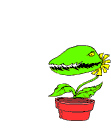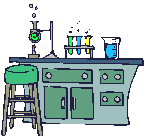I’m having fun.
Posted February 28, 2023
Do you think you could beat a potted plant in chess? Could I?
Sometimes I find myself wrapped up in these sorts of silly ideas, one just latches itself to my brain one day and I just can’t stop until I’ve found my answer, no matter how unimportant or nonsensical it is. Plant chess is one of those ideas.
My wife has been growing a few herbs in our backyard for a little less than a year now, to quite a bit of success! Perhaps a little too much success. We’re only two people. By that, I mean that the situation is dire and we’ve been forcing plants into the hands of anyone who will take them.
In our endless pursuit of finding ways to use up an ungodly amount of basil, Alice suggested that I use a few plants in an experiment of some kind. I appreciate the thought, I told her, but I don’t really have any use for them.

To which Alice, in all her brilliance, then asked me to “teach one how to play board games.”
It was an off-hand statement. I know she wasn’t serious. She just likes saying silly things like that. She probably forgot she even said it within minutes.
That night, as I was getting ready for bed, I blacked out and only came to my senses as I was performing some type of electroshock therapy but for plants. More on that later.
Get out your notebooks, my friends, it’s time for a bit of mad science history! (cue the applause and wild cheering)
Growing up, I was absolutely fascinated with the experiments of Cleve Backster, an interrogation specialist known for his parapsychological research (parapsychology being the pseudoscientific study of psychic and paranormal phenomena, for those unaware) concerning the ability of plants to react to human thoughts or emotions.
(Pronunciation note: "Cleve" is pronounced like the name "Clyde" but with a V.)
He would attach polygraph electrodes to a potted plant, traditionally used to measure electrical variations in human skin, and subjected the plant to various stimuli to see if the polygraph could pick up any reaction. Much to his surprise, he got a response. He was convinced that plants, and all things, were connected in ways beyond human comprehension; Plants were supposedly capable of a form of telepathy.

As you can imagine, no one has ever been able to recreate Backster’s findings, especially not in a controlled experiment. Regardless, he defended his beliefs to the grave.
Perhaps Backster’s work was…far-fetched in his time, but this is the age of mad science! The once confining rules of reality are bent a bit more each day, and with that, Backster has come to be known as one of the earlier examples of a mad botanist.
I’ve had many colleagues who’ve been inspired by his work in one way or another; a plant’s internal electrical currents can be used for all sorts of things.
Things such as playing board games!
Which brings us back to the whole electroshock therapy for plants situation. Turns out, in my state of fevered inspiration, I had rigged up an old chess board to respond to changes in the plant’s internal electrical currents, moving along the chess pieces (with fun little magnets on the bottom).
From there, the main problem was getting the plant to elicit the correct signals to make valid moves, so we could get an actual game going.
After a long, long while of trial and error, I managed to get it to a point where it randomly selects from a list of possible valid moves, which is sort of like actually playing chess? I think?

So, yes, technically by personally manipulating the plant’s currents I hadn’t taught it anything at all. This task would have been much simpler had the potted basil had anything resembling a human brain. Or maybe any method of communication? Or a method of it actually retaining information? Perhaps this whole experiment would’ve been a breeze if PLANTS WERE SENTIENT, CLEVE.

I’ll be showing the basil chess to my wife sometime tomorrow. I’ll update you all with her thoughts! :)
If you need me, I’ll be rummaging through my closet for my old copy of The Secret Life of Plants.
Stay curious!
- Dr. Diamond
